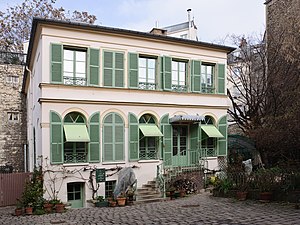漢清講堂
時間 2018年8月19日 (禮拜天) 10:00~12:30
地址:台北市新生南路三段88號2樓
電話:(02) 23650127
主題:紀念漢寶德先生參加人員:羅時瑋教授 (東海;作品有《情境與心象──漢寶德》等);李肇修教授 (台南藝術大學退休校長);曹永洋老師;鍾漢清先生.........
貴賓簡介:
李肇修
小提琴家
紐約州立大學石溪分校音樂藝術博士(小提琴)
紐約曼哈頓音樂學院小提琴演奏碩士
1992回國後受陳漢强先生邀請任教新竹師範學院
1996年受漢寶德先生邀請協助籌劃七年一貫制音樂系
2007-2015年擔任台南藝術大學校長
-----
羅時瑋
1953年生,東海學建築系畢業,台灣大學土木研究所交通工程碩士、比利時魯汶大學建築碩士、博士,台北市及台灣省建築師公會會員,專長及研究方向在於亞洲城市建築、台灣都市建築、城鄉建築理論與實踐、建築構造研究、鄉村社區營造,東海大學院長、建築系教授退休,著有《情境與心象──漢寶德》《地方前進》、《擾動邊界》等等。
******
漢先生在九歌的2本書。
1990年,150元;2006年,300元
漢寶德<生活藝術與教育>
情境與心象──漢寶德,台北:典藏藝術家庭, 2008
以現代理性穿透傳統文化的築夢者
閱讀漢寶德,同時也經歷其建築教育、建築實踐、乃至於文化理念的人間實踐。他的建築思想光譜跨越建築、都市、歷史與文化,他自許是建築的知識份子,對社會先憂先見,他的作品顯現出空間思考的實驗色彩,他的建築志業擴充到教育與文化領域,從六○年代迄今的台灣成長經驗看來,漢寶德代表一位從現代主義專業實踐逐漸走向儒者社會文化實踐的人物典型。
238 談漢寶德的書、翻譯與"入世精神" 鍾漢清
漢寶德《建築‧社會與文化》郭肇立新編,台北:建築情報,2001 (修正四版)
"修正四版"的編 (橫)排和插圖很好,又努力作出簡單的索引(還缺一些,如Edwards Shil,p.136;Peter Drucker 的書,漢先生可能讀的是遠東圖書張譯本......),很有貢獻。然而,郭博士對內文和內容都依舊,沒請漢寶德先生作出比較合規格的書寫 (譬如說,頁108的是"她",全名是Moholy-Nagy, Sibyl(1903~71), 該年 (1970)還有專書:. The Architecture of Paul Rudolph. Praeger.) 漢先生1973年寫的〈葛羅培的現代建築〉,對美國的建築學界有許多嚴厲的批評:
2018年10月是Paul Rudolph (1918~97)的百年紀念,美國國會圖書館在26日有展示和研討會。文中批評的Robert Charles Venturi Jr. (June 25, 1925 – September 18, 2018) 剛過世;Vincent Scully (August 21, 1920 – November 30, 2017);Charles Willard Moore (October 31, 1925 – December 16, 1993) ...
換句話說,〈葛羅培的現代建築〉所提到人物,都已仙逝;2019年是BAUHAUS百年紀念......,我們或能更清楚理出他們的爭論。
漢寶德《建築‧社會與文化》,台北:境與象,1975/1980 (修正二版)
*****
城市建築的過去與未來
作者:史兒 /2009-07-03
http://okapi.books.com.tw/article/5459
受訪者:漢寶德/世界宗教博物館館長 採訪者:史兒
地點:世界宗教博物館
城市在今天看來是由建築組成的,但在古文明裡,城市就是一個大建築,是一個大整體的規劃,城市規劃有非常長遠的歷史。過去的城市,大致可分為兩種型式。
第一類型的城市,是古文明建立的城市。每個文明都有對空間的想像,提出對都市規劃的概念。在文明其中,有一種文化的力量,把城市當成一個重要的象徵,如:古希臘的城市、古中國的城市、中東、西亞。這些地區的古文明,都對城市有很大的規劃,他們建立的多半是幾何城市,表達宇宙觀和權力結構,如:中國的古長安城,方方正正的格局。古文明城市的建構,都有代表權力意志的帝王在其後支撐,因此,宮殿和神廟是這類型城市裡最主要的建築,表達強烈的美感觀念,尤其希臘後期時的希臘化時代、羅馬帝國時代,我們更可看見這個模式。這些城市都有很多的公共建築,彰顯權勢和神的力量,建築與整個城市結合在一起,配合得很好。
第二類型的城市,是較自然的發展,如果這個地區在歷史上並未形成大帝國,我們就可以想像它的城市,乃是經由自由演變而來。最好的例子是中世紀歐洲的國家。這些國家最初都是封建的領土,沒有強大的國力,也沒有安定的政府,由領土發展成國家。在這些城市的中心雖然免不了有宮殿、教堂,但主要還是以生活化的建築為主,配合自然地形,考量財力。這些城市都是活生生的生物,有時在山頭,有時在島,這是因為它們具有防衛的條件。這些城市就像有機物一樣,在裡面你很少看到大建築,建築物都很狹小,組織得像一個個村落一樣。從前台灣的鹿港就是一個代表,小巷多、房舍低矮,但可惜後來被日本改造,中間拆了房子,蓋了大道,這些原來是沒有的。
今天我們去歐洲旅行,還能感受這兩種不同類型城市的差異。你看羅浮宮的軸線,還能看到幾何的線條,北京城的天安門廣場亦然。但說到巴黎本身,它是在十八世紀才產生帝王,才開始把它的觀念用到自然建構出的城市上,今日我們看到巴黎的「美」,是路易開闢出來的,他把他認為的「美」強加在城市裡。台灣在建城時也是拆了許多民房,像板橋林家花園,這些建築都隱含欺壓老百姓的意味。
不論古典亦或自然,這兩類城市都有不同的美感,文明建造的城市有「秩序」的美感,空間莊嚴、偉大,容易令人感動,實際上就是種權威的表現。人會受到空間的感應,表現出順服的行為,而成為階級的工具,今天我們去看古建築,當然沒有這個問題,變成純粹的空間美感了。
是以,都市的美感和其它藝術一樣,可以分為古典的美感,以及中世紀的美感。你看倫敦,倫敦看來好像沒有巴黎那麼美,不過它仍保留中世紀的味道,道路彎曲、街道寬窄不一,倫敦市中心都是很狹窄的,聖彼德堡教堂從前是沒有廣場的,這在大帝國是很難想像的事。古典建築注重整體感,一座宮殿或神廟,都是有廣場的,方便人瞻仰整座建築物,但是你看中世紀的建築,這些教堂都很美,但是建造者注重的是生活性,所以完全沒有設置廣場的構想。像聖彼德堡大教堂,現在才把它周圍、靠河邊上的房舍拆掉來做廣場。
在現代,建築思想主要在超越古典與自然。古典時期,「城市」和「建築」密切結合在一起,兩件事就是一件事,都市計劃也就是都市設計,建築時不忘城市規劃,城市規劃時不忘建築。但相反的,中世紀的建築都是偶然發生,自然成長。由於自然成長的成市不是規劃出來的,所以有較自然的演變。可惜這兩種都市的建築,都被現代化所破壞。現代化破壞了城市,破壞的最大主因是交通工具的發展。最開始是馬車,破壞的力量還不算大,但後來汽車發明後,它形成最大的破壞。有了汽車,才有現代的城市規劃。
城市不得不需要交通建築,現在是依交通因素來建立城市。像歐洲發明許多小車,就因為在山路難行大車。二十世紀以來,產生世界性的城市解體,自美國首開先例。美國歷史雖不長,但也都是由自然而形成的都市,汽車造成破壞,高架道路把城市切成一塊一塊,沒有人考慮城市景觀的問題,都市向四周擴散,像今日的洛杉磯。城市的美感,早就不再重要了。
台北市的情況也是如此,並沒有依照都市景觀的概念來建設,現在大家懷(sic)城市的美感,所以常出國旅行,體驗各種不同的文明。當然,現代化後,我們已與過往有很大的不同,以前都是木頭房子,西化後,我們又都蓋了西化的房子。但在沒有西方文化的基礎上,建設起來的房屋,像中興新村,像台北城裡的老建築,這些西化、甚至日本化的房子,現在一個個都變成古蹟,雖然藝術價值不高但仍留存下來。這是我們的城市文化嗎?
半世紀以來,人們開始注意到城市的美學,對失焦的空間、高速公路化等等感到空虛,因此希望重建城市的美感,二十世紀中葉,開始有了都市設計的課,要在公共空間裡重建空間的美感,要去討論空間和建築該如何配合,這些課的實踐叫作「都市更新」。在台灣,我們的法律不太完備,公權力無法申張,想要利用公權力來創造公共空間很困難。我們的民主還不成熟,人民必須要了解,除了自利外,民主還必須來為他人設想,要為群體設想。每個人都有各自的利益,但我們彼此相互尊重與妥協。
要規劃良好的城市,一方面要健全的法令制度,一方面要有才能的規劃人員,還要持續且堅定的實行,十年?二十年,三十?五十年,才能看見效果。信義計劃區是個讓人失望的例子,本來有很大一塊地方可以好好發揮,但是我們沒有人才,連理想的規劃都沒有,很可惜失去了這個機會。即使我們有人才了,政府制度也還不完備,政府甚至也沒有權力可以去審核建築的美感。你看,建築我們每天都要經過,每天都看的見,它是最標準的公共藝術!應該要有一個法律,能規定高樓高到某個程度,就不再只是私人的事,而是每個人的事,所有的人都應該有發言權,這個制度不能建立,實在可惜!
信義計劃區本來可以成為一處最好的規劃的,現在,台北已然不再有此機會了。
---
台灣的新建築,日後逐漸錯過了「富而好美」的年代,變成「家庭與公司行號的堆積」(《都市的幻影》,1983,台北天下文化)。
*****
****
https://hcbooks.blogspot.com/2018/07/2014.html

HCBOOKS.BLOGSPOT.COM
漢寶德《文化與文創》2014
漢寶德《文化與文創》台北:聯經,2014.10 仰望漢寶德,從《文化與文創》談起| 生活| 三立新聞網SETN.COM https://www.setn.com › 生活 2015/12/22 - 漢寶德的著作不少,但他辭世前一個多月,出版的《文化與文創》,絕對是這位文化老兵...
幾位朋友:羅時瑋教授 (生平介紹、座談)等,一起談他們所認識的漢寶德先生。
台中科博館的館訊368期,36cm*28cm 彩色8頁之刊頭。
注意,這是第368月;除臺中館區外,還有其他3處......
每篇都是研究人員的"簡報",活動登在末頁3.8cm*28cm處。民眾可附每期3元郵資索取。
注意,這是第368月;除臺中館區外,還有其他3處......
每篇都是研究人員的"簡報",活動登在末頁3.8cm*28cm處。民眾可附每期3元郵資索取。
【沒考上第一志願,是人生第一個幸運】
孫維新,台中自然科學博物館館長、知名天文學者、得過金鐘獎的教科文節目主持人獎,他在台大開的通識課程「認識星空」非常熱門,每學期有上千人排隊搶著修;宇宙間還有一顆小行星,是以他來命名。孫維新會走進不可預知的天文領域,竟然只是因為一個意外,改變了他的一生。
<大乘的建築觀>1995 中國文化是一種大眾文化:未來的建築傳統應以民間多元發展為主要方向。
漢先生在東海的教職期間是1961~77,維基百科資料錯誤:1960年至1970年 (sic 應該為1961~1977)曾任台灣東海大學建築系系主任。

漢寶德先生與出版、翻譯 ;The Ascent of Man文明的躍昇 : 人類文明發展史(待補)
很少曬書。因為要紀念漢先生,取出一疊他的作品。有不少近40年的平裝書和雜誌。心想,該曬曬,不然下回會師時,肯定近解體。於是曬書去。超級颱風將到.......我急忙到另一處顧房。想到曾去曬書,已數天後。於是發現書與雜誌都浸泡了。看來,只好"二次烘乾".......

"黃健敏分享了 1 則貼文。 2015年3月15日 · 境與象-漢寶德紀念論壇更新了近況。
1972......漢寶德編譯: 《路易士.康 Louis I. Kahn》台中:境與象出版 該書中由漢寶德所撰的「 康與當代建築」 一文,收錄在《漢寶德談現代建築》 一書,典藏出版,2008/10."








HCBOOKS.BLOGSPOT.COM
我所知道的漢寶德先生 《境與象雜誌》《境與象叢書》境與象出版社
2018年8月,漢清講堂將邀請羅時瑋等專家來紀念漢先生:我所知道的漢寶德先生 。 《境與象 雜誌》《境與象 叢書》(境與象出版社)等,內容的部分。 維基百科,自由的百科全書 漢寶德 個人資料 性別 男 出生 1934年8月19日 中華....





















